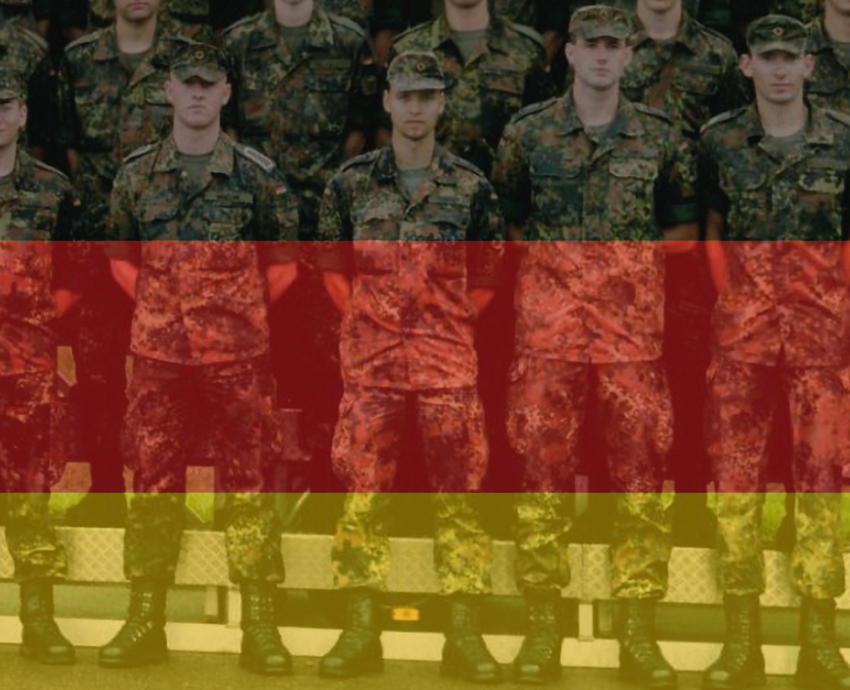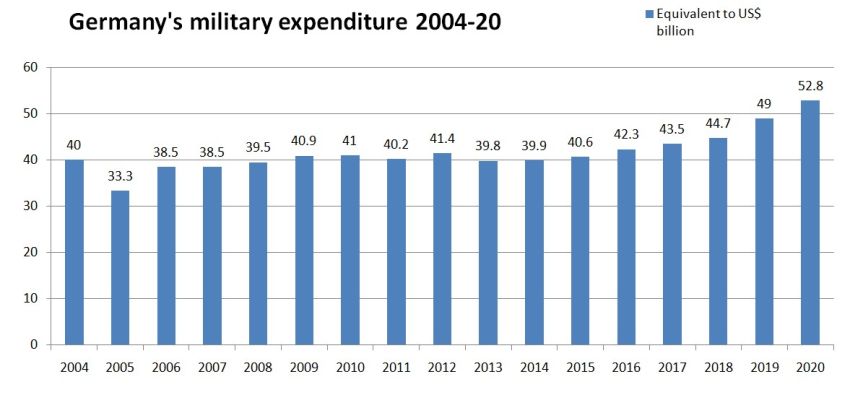
After World War II, Germany’s legal status was that of an occupied country. That ended in May, 1955. While the German Constitution came into effect during this period — in May 1949 — there was no mention of any armed forces. The establishment of the Bundeswehr (federal defence force) in 1956, via a Constitutional extension, explicitly limited its function to defence and deterrence.
The day after its status as an occupied country came to an end, West Germany joined the North Atlantic Treaty Organization (NATO). East Germany became a member of the Warsaw Pact, when it was formed a few days later.
Up until the end of the Cold War, the German military was only involved in international humanitarian deployments. From 1990 onwards, this shifted towards participation in United Nations- and NATO-mandated missions.
Legal disagreement on the question of whether the deployment of forces was possible in so-called “Out of Area” (of NATO) regions and required Federal Parliament (Bundestag) approval, was settled in the affirmative on both accounts by the Federal Constitutional Court in 1994.
Since then, the German army has been deployed in numerous international war zones including Kosovo, Mali, Iraq, Afghanistan, Syria, South Sudan and Lebanon.
On the 60th anniversary of Germany’s NATO membership, in 2015, the Christian Democratic Union’s Ursula von der Leyen — then Germany’s defence minister, now president of the European Commission — committed to the goal of two percent of the country’s gross domestic product (GDP) for military spending. This target had been set by NATO in 2014, during Barack Obama’s presidency in the United States.
At the time, Germany was spending 1.2% of GDP on defence.
The social democrats agreed to the move, which was justified by the 2014 Russia-Ukraine tensions and the growing threat of Islamic State. The approach of using an increase in military spending as a way of pursuing “peace” is therefore not new.
Then, just as now, it was Die Linke, the socialist party of Germany, which publicly opposed the increased spending, arguing that the funds be used on social spending and humanitarian aid instead.
Since NATO’s inception, the US has spent a higher proportion of its GDP on military spending than its allies. Since the 2014 NATO decision to commit to meeting the 2% spending target by 2024, NATO defence spending has gone up. Countries now meeting the 2% target include all the Baltic countries, Greece, Croatia, Romania, Poland, France, Britain and the US.
Germany, as the largest European economy and the second largest economy in NATO, has consistently increased its military spending in nominal amounts and was estimated to have spent 1.53% of its GDP on the military in 2021. Spending was at US$40.6 billion in 2015 and rose to US$52.8 billion in 2020.
So, when Chancellor Olaf Scholz addressed the Federal government on February 27, announcing a €100 billion boost to defence spending and committing to take the defence spending up to 2% of GDP, he was continuing along this trajectory.

While there is an official position of not sending weapons into conflict zones, successive German governments have done so — so Ukraine is not a first. Germany has sent arms to Egypt, Saudi Arabia, the United Arab Emirates, Kuwait and Qatar — all potentially used in the conflict with Yemen. This has occurred since 2010 under Chancellor Angela Merkel and includes war ships, air defence systems, anti-aircraft tanks, canon ammunition and firearms. Turkey has repeatedly received arms from Germany — most likely used in Libya and the fight against the Kurdish resistance, the Kurdistan Workers' Party and the People's Defence Units/Women's Protection Units militia.
Germany’s direct supply of defensive weapons to Ukraine is a continuation of established practice. In this instance, it may have the public’s support. According to a snap poll conducted in late February by a well-known polling firm, 78% of Germans support the arms exports and investment in the armed forces, while 69% fear that NATO will be drawn into the Russia-Ukraine conflict.
Even though Scholz’s February speech may not indicate an actual global shift in military approach, it is clear that the impact of the rise in defence spending will be felt by ordinary people, when social spending and badly-needed investment to address climate change will suffer.
This can only be countered by a united peace movement that condemns the war and NATO expansion, opposes arms exports and stands in solidarity with refugees.